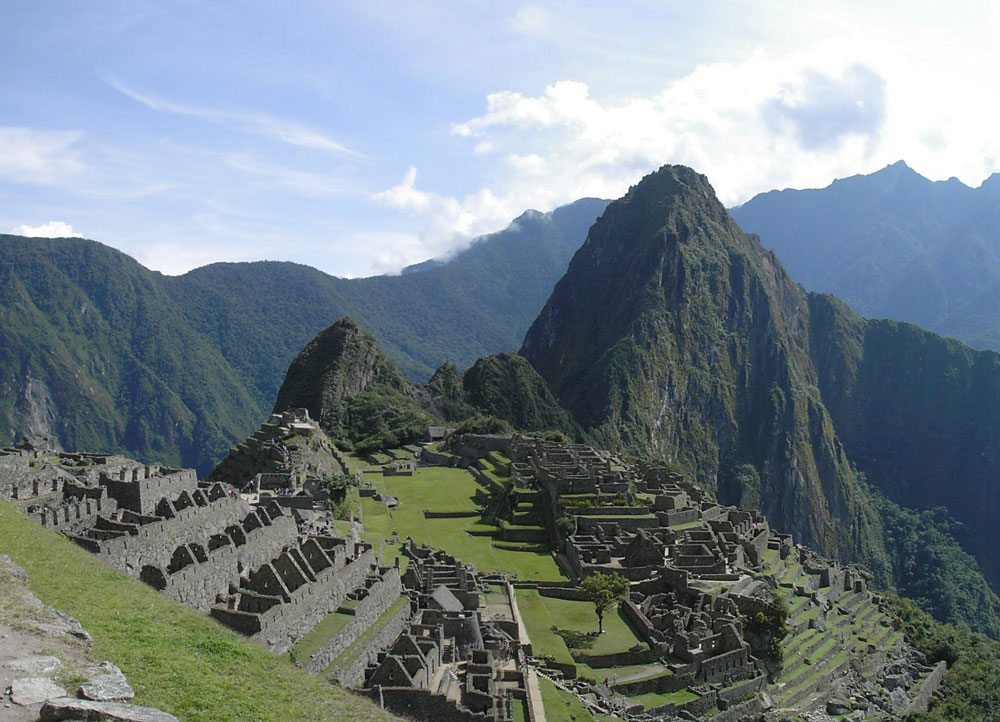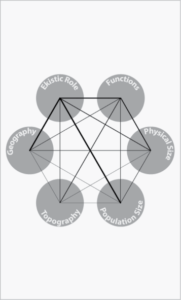7 Functions

30. The functions of a settlement depend on the geographic and topographic location, geologic conditions, technological development, population size, and the role within the larger settlement system.
Given the many elements presented in this law, it is worth dissecting them further to understand how they relate and expand on Doxiadis’ initial insights. This is particularly important since I have added geologic and technological factors to his initial statement.
In keeping with Law 26, geography, topography and geology play critical roles in determining the functions of a settlement. The creation of an agricultural community, for example, is clearly dependent on those three conditions to facilitate the growth of food. Referring to Neolithic settlement in Mesopotamia, James Breasted describes how they began “….in small oases on steppes and plateaux. Despite the threat of drought the difficulties of taming soil were less formidable there than in the flood plains of major rivers” (Morris, 1979, p. 4).
Expanding Breasted’s thoughts, Anthony Morris describes how early farming communities established themselves on higher ground over thousands of years, and gradually moved “down the valleys of the Tigris and Euphrates as the alluvial deposits dried out and as techniques, especially irrigation, were improved” (Morris, 1979, p. 5). This passage also highlights the importance of technologies and techniques with respect to the function of a settlement.
In terms of population size, Doxiadis highlights that functions determine population size, and not the other way around. Given a settlement’s dynamic nature (Law 22), as it develops it acquires different functions due to its size (Law 2 and Law 11). As such, its functions are in constant flux.
The functions of a settlement are also conditioned by the role within the larger co-dependent settlement system (Law 0 and Law 8). In the contemporary world of global trade and technological innovation, the intersection between all the factors within this law has shown a number of interesting results. The development of Memphis, Tennessee as the home of the Federal Express cargo airline global “SuperHub” due to its geographic location is a case in point. Issues around roles are elaborated on further in Law 31.
It is worth noting, however, that discussions around the role and function of a settlement must necessarily engage the issue of time (Law 14).
FURTHER READING (full citations found in reference list):
- Constantino Doxiadis – Ekistics: An Introduction to the Science of Human Settlements
- James Henry Breasted – Ancient times, A History of the Early World: An Introduction to the study of Ancient History and the Career of Early Man
- Anthony E.J. Morris – History of Urban Form Before the Industrial Revolution
31. The role of a settlement within its larger co-dependent system depends on its function, geographic/topographic location and population size.
Intimately related to Laws 26–27, the role of a settlement within its larger co-dependent system depends significantly on its geographic location. According to Doxiadis, the latter governs its class. However, its function also plays a part in this relationship.
As noted in Law 30, time is a very important variable in this equation, as functions and roles can change based on different cultural values and technological advances. The example of Memphis, Tennessee as the Federal Express global “Superhub” was already given in Law 30, but there are many more examples, big and small.
Population size dynamically responds to the changing functions and adds to, or detracts from, its role within the larger co-dependent system. Doxiadis suggests that this results in, “changing and reclassifying the settlement within the whole system” (Doxdiadis, 1968, p. 304).These changes can increase or decrease the importance of the settlement within the system.
The unpredicted popularity of Squamish, British Columbia as a contemporary global kiteboarding hotspot and growing recreation node is an interesting example. Its location within driving distance of Vancouver—itself an international draw—at the head of the Squamish River Delta where land, mountains, and water converge to create strong winds through the Howe Sound fjord, has contributed to its increasing role and consequent growth.
FURTHER READING (full citations found in reference list):
- Constantino Doxiadis – Ekistics: An Introduction to the Science of Human Settlements
- Anthony E.J. Morris – History of Urban Form Before the Industrial Revolution
- John Clague and Bob Turner – Vancouver, City on the Edge: Living with a Dynamic Geological Landscape
32. The functions and role of a settlement are interdependent with geography, topographic conditions, geological circumstance, as well as population and physical size.

As implied in Law 30 and Law 31, this law formally states that geographic location, topographic circumstances, as well as population and physical size are interdependent. Doxiadis is explicit in the fact that, despite the latter, a hierarchy exists between these factors, with greater value placed on certain relationships than others. This is the reason why the previous two laws (Laws 30 and 31) place emphasis in certain directions.
This law, specifically, is meant to summarize the relationships between all the factors cited in Laws 26–31. The diagram following this law shows how geographic location, topographic conditions, “Ekistic role” (within the larger settlement system), population size and physical size “form a circle within which all possible connections are justified to different degrees. There are no missing links between the circles; some of them are simply stronger than others. The radiation of these circles represents one of the previous six laws while the total stands for the law of interdependence” (Doxiadis, 1968, p. 307).
We must also remember the importance of technological development, however. As discussed several times within the Laws 30 and 31, it has a strong relationship to people’s world view and relationship to the natural and physical worlds.
FURTHER READING (full citations found in reference list):
- Constantino Doxiadis – Ekistics: An Introduction to the Science of Human Settlements
- Anthony E.J. Morris – History of Urban Form Before the Industrial Revolution
- James Henry Breasted – Ancient times, A History of the Early World: An Introduction to the study of Ancient History and the Career of Early Man
- Peter Hall – Cities in Civilization
- Ian McHarg – Design With Nature
- Henri Pirenne – Medieval Cities: Their Origins and the Revival of Trade
- Amos Rapoport – House Form and Culture
- Bernard Rudofsky – Architecture Without Architects: A Short Introduction to Non-Pedigreed Architecture

